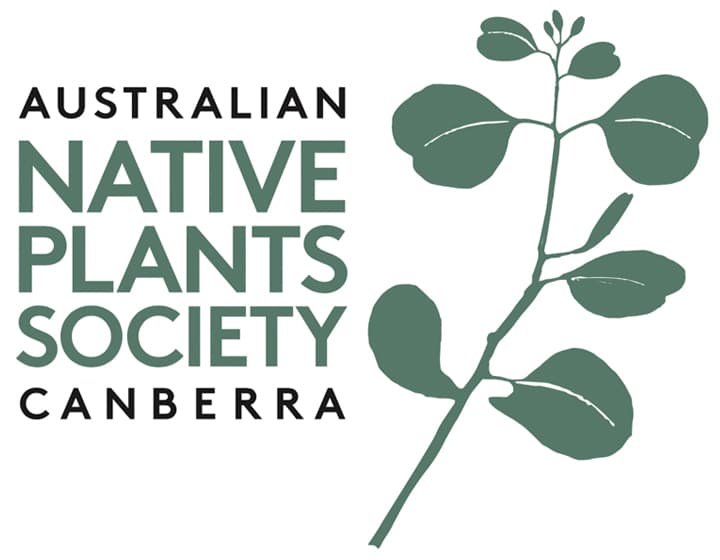Twenty Years On – Walcott Garden 2003-2024
By Words by Ros Walcott, Photos by Ben Walcott
May 2024
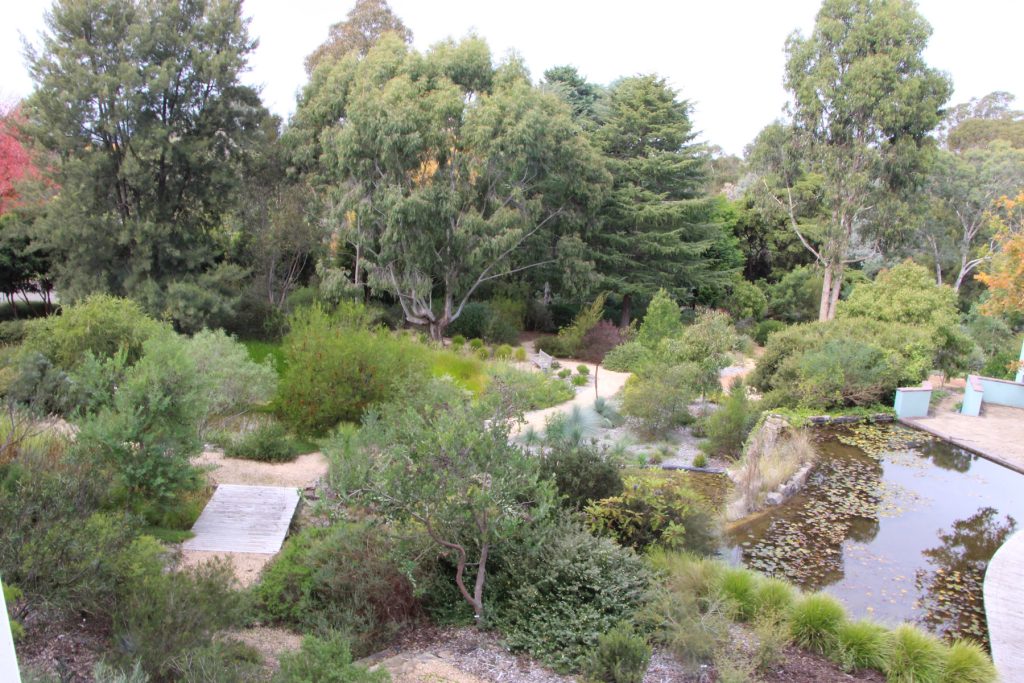
We purchased our block of land in the suburb of Red Hill in Canberra in 2001, but did not begin to garden there until July 2003. Our property was first developed in 1926 when a small house was built on the one hectare (9300 square metres) property and a number of Pinus radiata were planted around the perimeter in the early thirties. Other large conifers were planted at the front of our garden, including a now magnificent 90 year old Portuguese Cypress, (Cupressus lusitanica). The property was purchased by the French government and used as their Chancery office for many years.
Our garden is a fan shaped block on a slope measuring 610 metres altitude at the top to 600 metres at the bottom. The soil has not been stripped (as is common in Canberra) and consists of yellow or red clay covered with loam which is neutral to slightly acidic anywhere we have measured (pH 7.0 – pH 6.5). We have amended the soil every year starting with 30 truckloads (15 cubic metres each) of ‘coarse forest litter’ in the first year, followed by 5-10 truckloads each following year. We also applied 30 bags of Dynamic Lifter in 2003 (an organic, poultry manure-based product in an aged and pelletised form to break up the clay and encourage the presence of earthworms and beneficial soil micro-organisms). The climate in Canberra is frosty in winter and hot in summer, with rain (annual average 625mm) distributed fairly evenly over the 12 months.
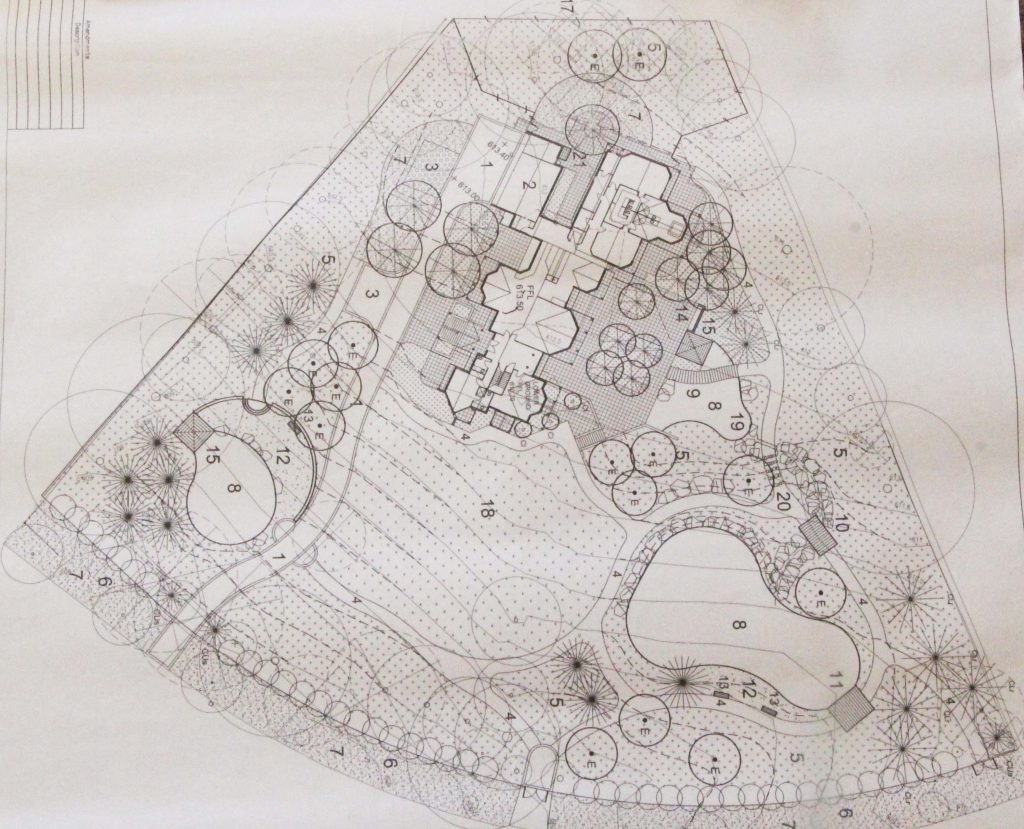
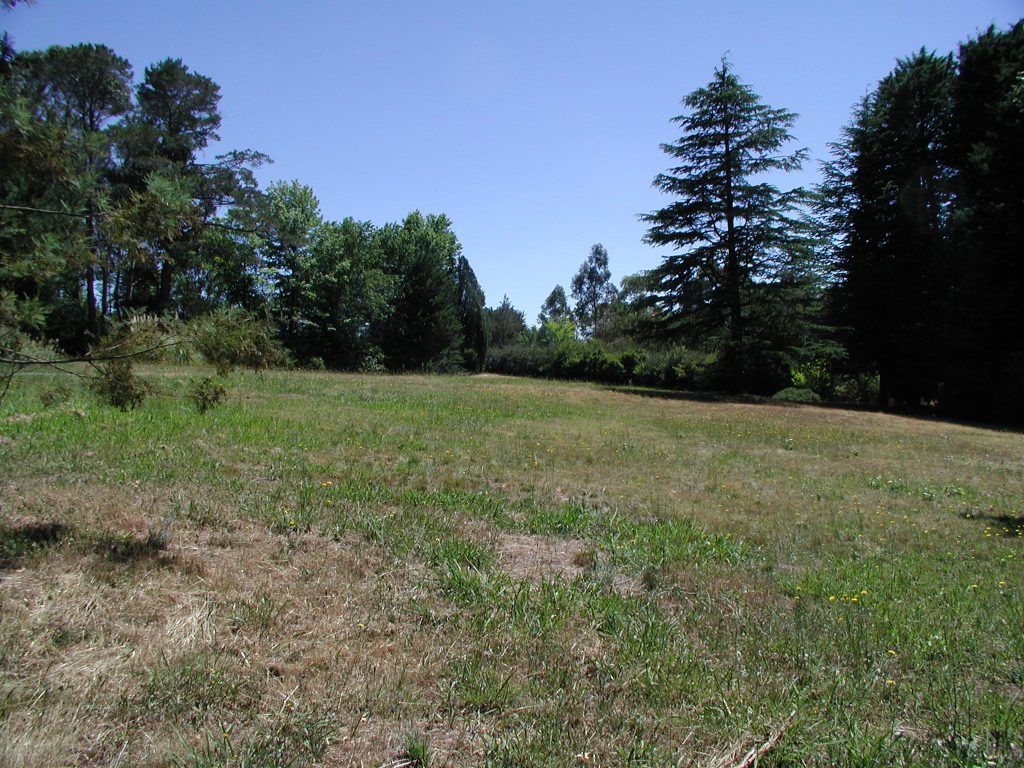
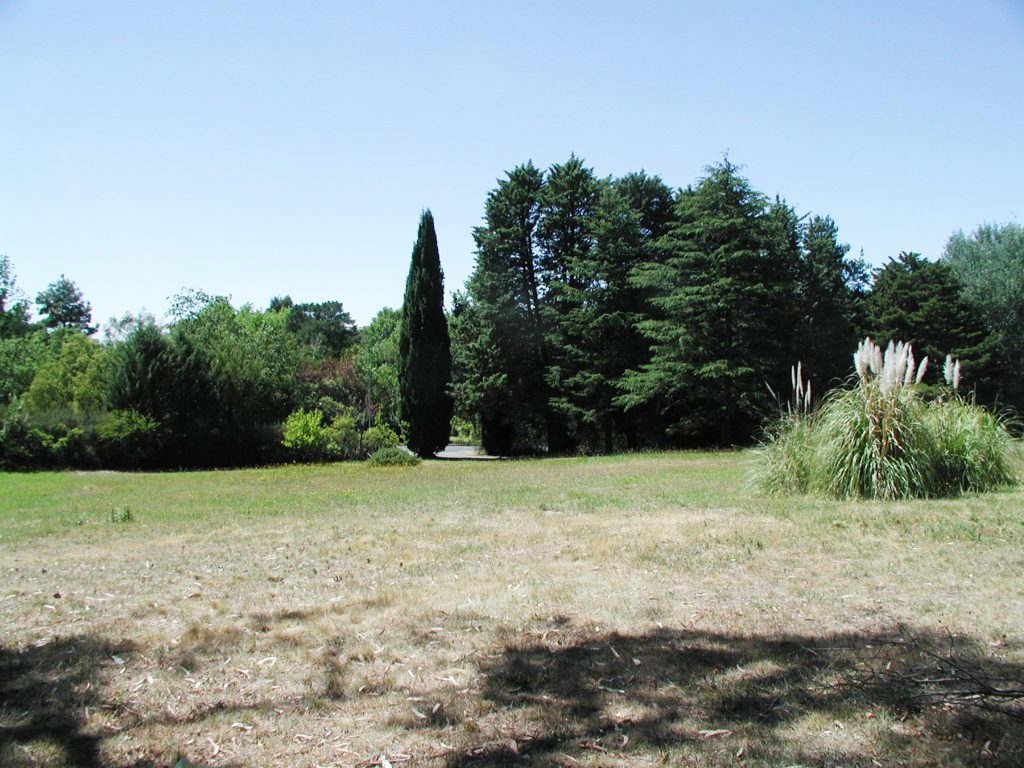
The garden is planted almost entirely with Australian natives, with a very few New Zealand natives added. Apart from the pre-existing exotic trees, we also have three Meyer lemon trees and seven pistacia trees. The original design of the garden was done by Helen Cohen, who was also part of the firm creating the architectural design of the house. We wanted to integrate the design of house and garden.
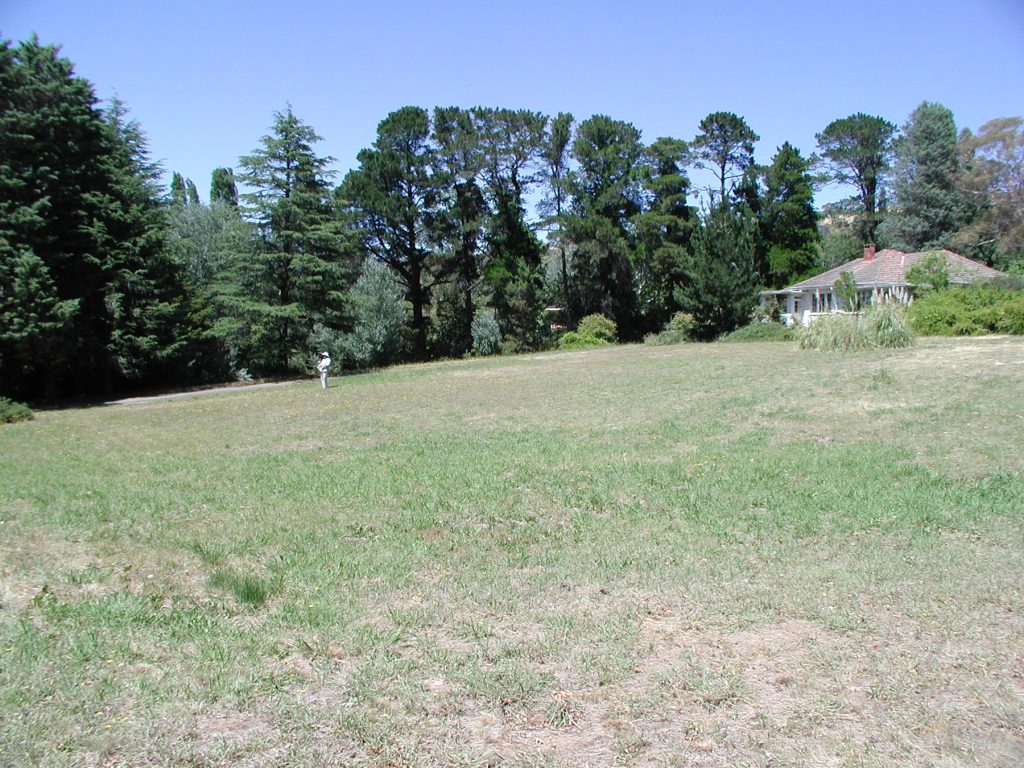
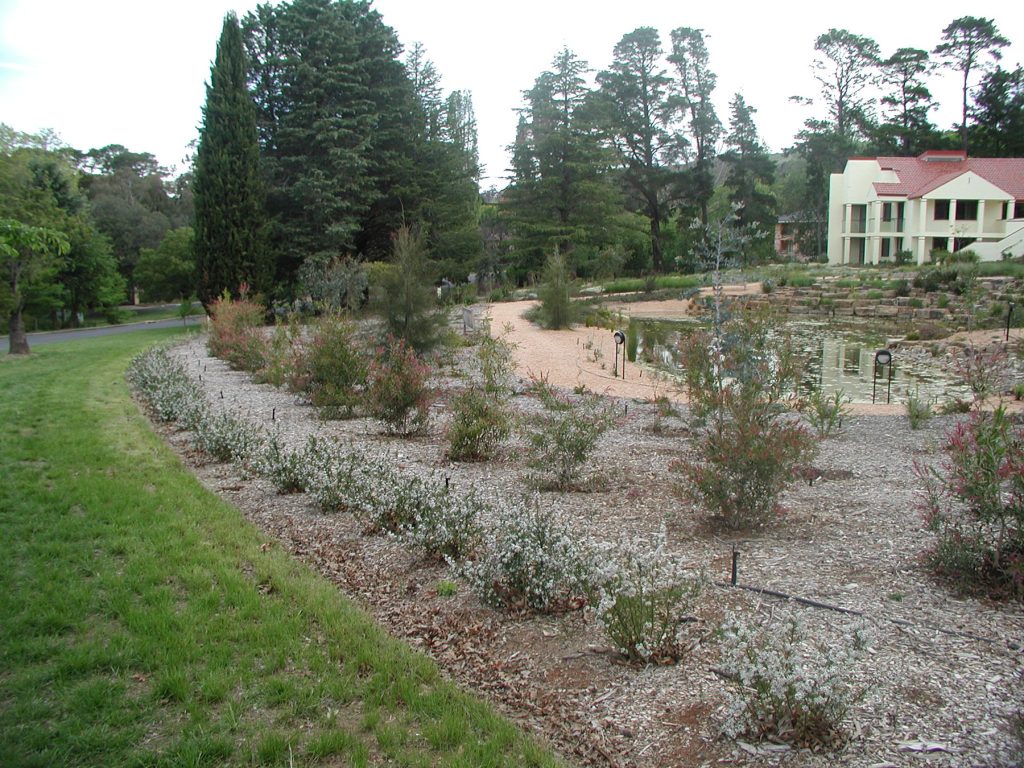
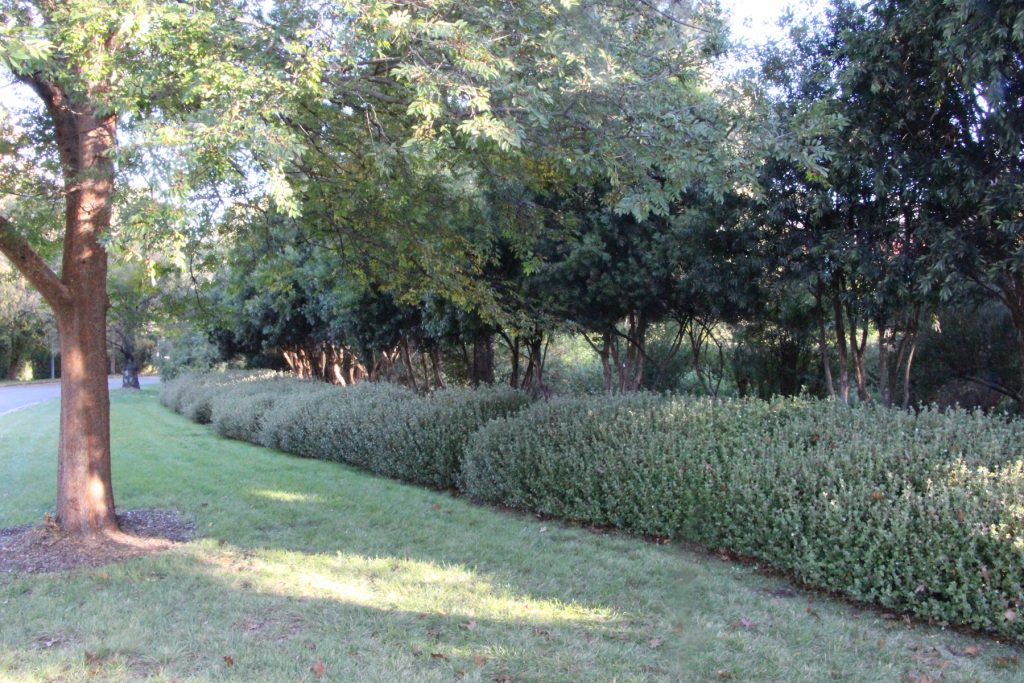
Over a period of two years, from 2001 to 2003, in consultation with Helen by email, phone and letter from America, we developed a plan for the garden. Our design principles included the following:
- the garden would contain mostly plants native to Australia
- there would be little, if any, lawn – where we needed open space we would have a meadow of grasses, forbs and lilies
- the garden would be attractive to birds and other wildlife
- plant foliage and shape would be more important than flowers, even though flowers were needed to attract many of the nectar feeding birds
- we would attempt to retain all rain water on the property for use in the garden
- there should be some open water in the garden to attract wildlife
- we did not want a series of enclosed garden rooms, but rather different areas that flowed into each other
- there would be more emphasis on the natural rather than the formal in the garden design, including wide paths in curved shapes
- while most native plants require trimming, they should only be trimmed to enhance their natural shape, not to create any formal shapes
Our architect, Wal Kostyrko, sited the new house turned 90 degrees to the original house, facing northeast to catch the winter sun along the whole length of the house. Wide eaves at the correct level ensure that the summer sun does not overheat the house. The trees on the block had received no maintenance for decades and needed attention. With advice from Dr. Robert Boden, (former Director of the Australian National Botanic Gardens) a number of trees were removed from the block and others pruned in 2003.
Able Landscaping was hired to complete site preparation and initial planting, and the Elvin brothers, David and Ian, constructed the rock work around the large and small ponds from rock quarried at Newline near Queanbeyan. All drainspouts from the roof and run off from the extensive granite paving are diverted into three ponds where rainwater is mixed with bore water to run the irrigation system. We use drip irrigation occasionally where practical but mostly a microjet irrigation system for the planted areas.
Over a six month period, from July 2003 to December 2003, the basic planting of 2,500 plants, including 40 trees, was completed. The meadow, 650 square metres in area, was planted with over 20,000 grasses, lilies and forb seedlings in November 2003. The soil was not amended in this part of the garden, as ripping the ground would have encouraged more weeds. The meadow planters used a drill to make a hole, then added a gel containing both water and nutrients and planted the seedlings. The meadow was rewarding at several times of the year but was the most difficult part of the garden to maintain. In 2014 we decided to redevelop the meadow as garden beds. We removed the grasses, dug over the area, added soil and irrigation and mulched with pebbles. We surrounded the beds with swales filled with large river pebbles to ensure excellent drainage. These beds have now been planted with low growing eremophilas, grevilleas, daisies and other colourful plants. We have also removed another area of lawn near the house which we have developed in a similar fashion.
We have planted almost 10,000 plants over the 20 years, representing about 1,000 different species, hybrids and cultivars, of which we retain about 4,000. I hasten to add that most of these plants have not died, although many have, especially in the early years when we were establishing overhead protection against frost and sun. The majority of plants have been removed for problems with rampant growth, failure to thrive, or changes in the garden design. These plants definitely did not read their labels. The challenging part of creating an Australian native garden is that the plants are not reliable or established in their growth patterns, as many have only recently been adapted to gardens from nature. The garden that we developed on Long Island over 30 years consisted of plants which were reliable in their growth patterns and whose horticultural needs were well established. I do not recollect that we ever had any plants die in our garden there, but only removed for garden design changes.
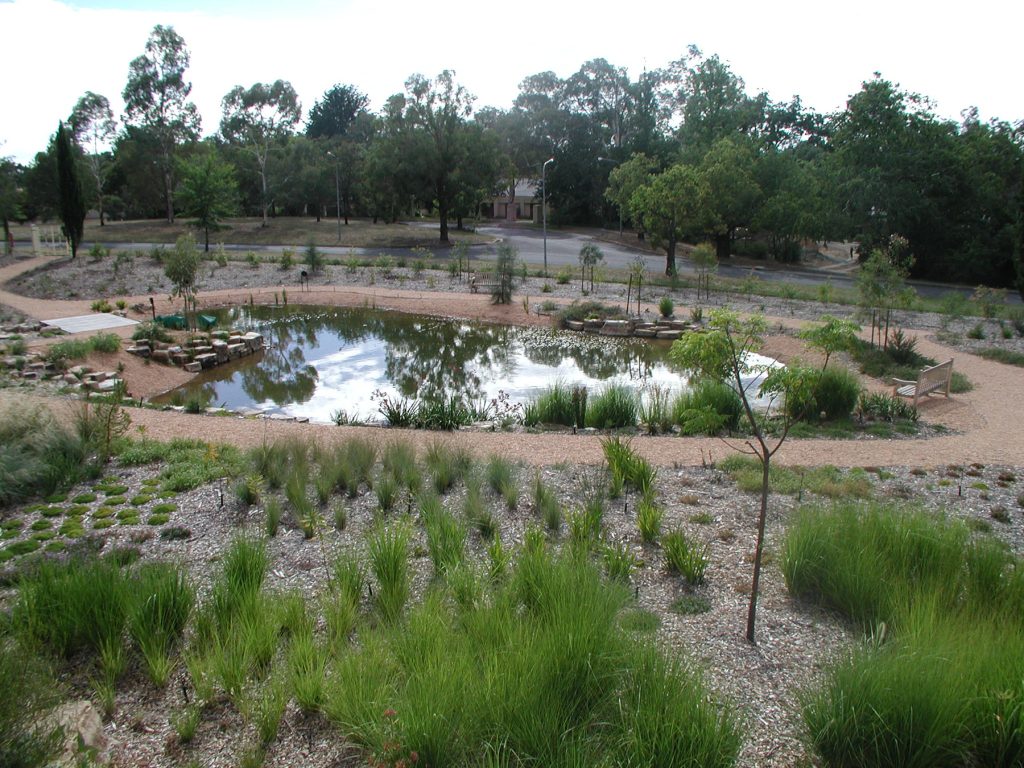
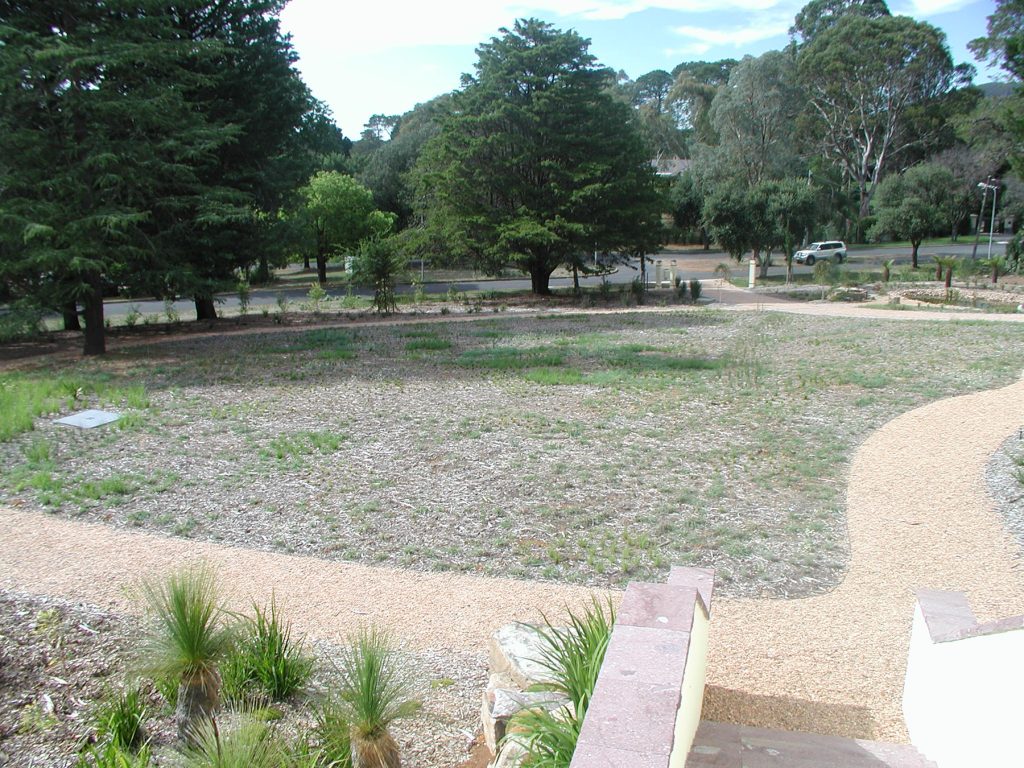

We have learned a great deal about our property over twenty years. In general we have lost few plants to cold and frost. The majority of plants have been lost during January and February, not because of lack of water, but because of excess heat. We have attracted over one hundred species of birds to the garden, from an original thirty five species, including a pair of breeding Australian Hobbies, and we expect to attract more as the garden matures. We have added a greenhouse for orchids and a shadehouse for seedlings. We also have an extensive collection of natives in pots, especially those that do not like our clay soils or frosts.
The making of the house and garden has been an intensely interesting, occasionally frustrating, and mostly enjoyable experience. We expect to continue learning about our plants and growing conditions for years to come.
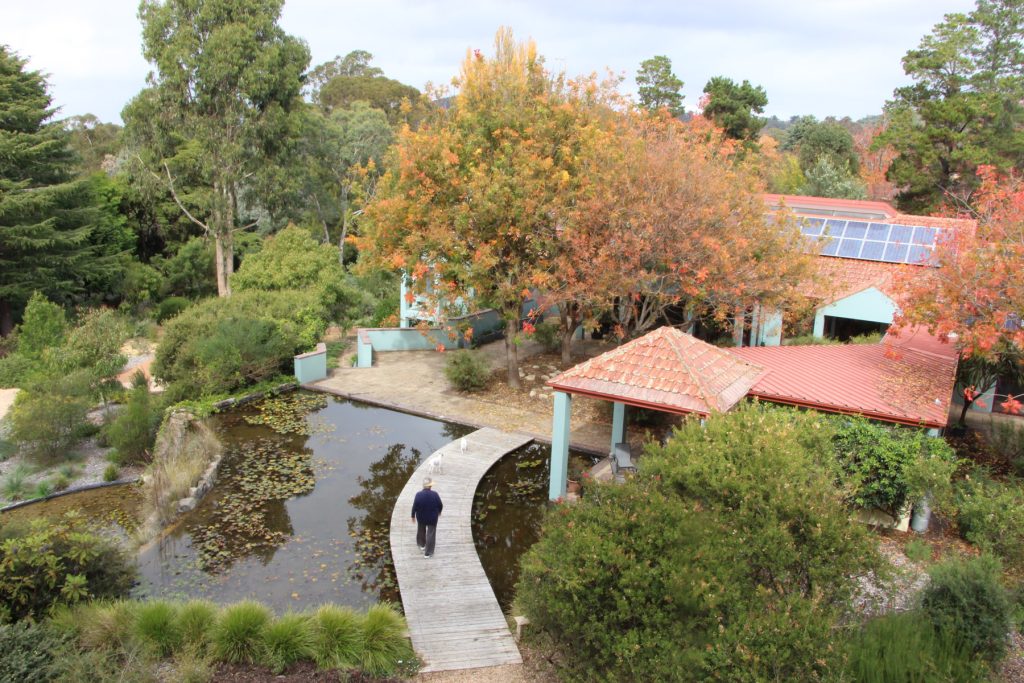
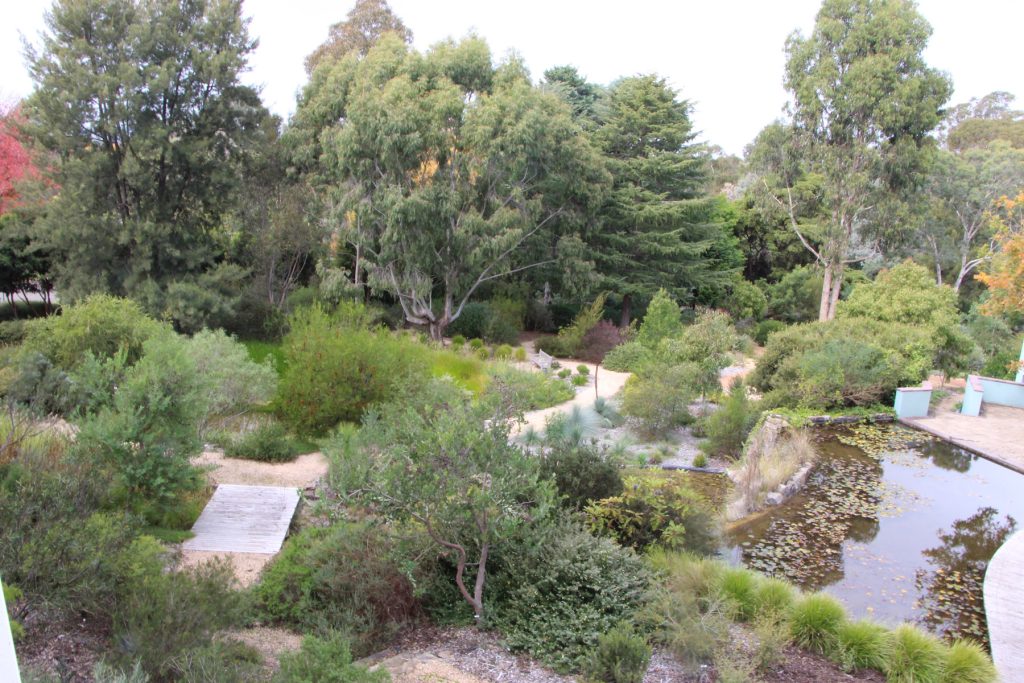
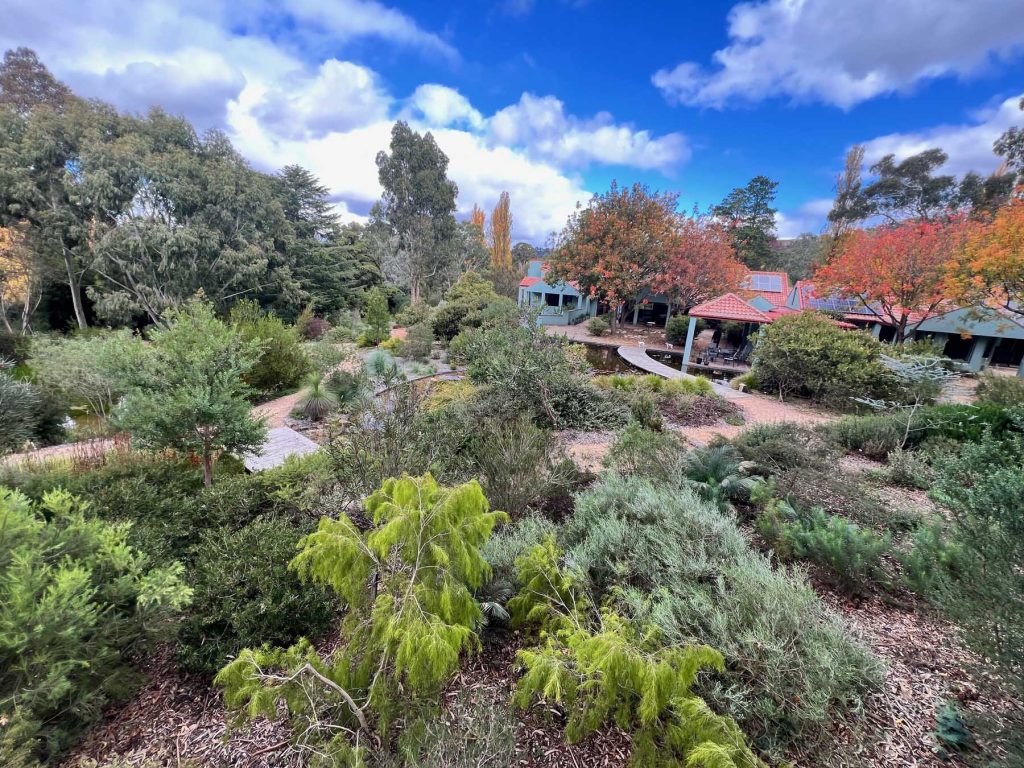
Website: walcottgarden.com for details of our plants and design
Back to Articles List
